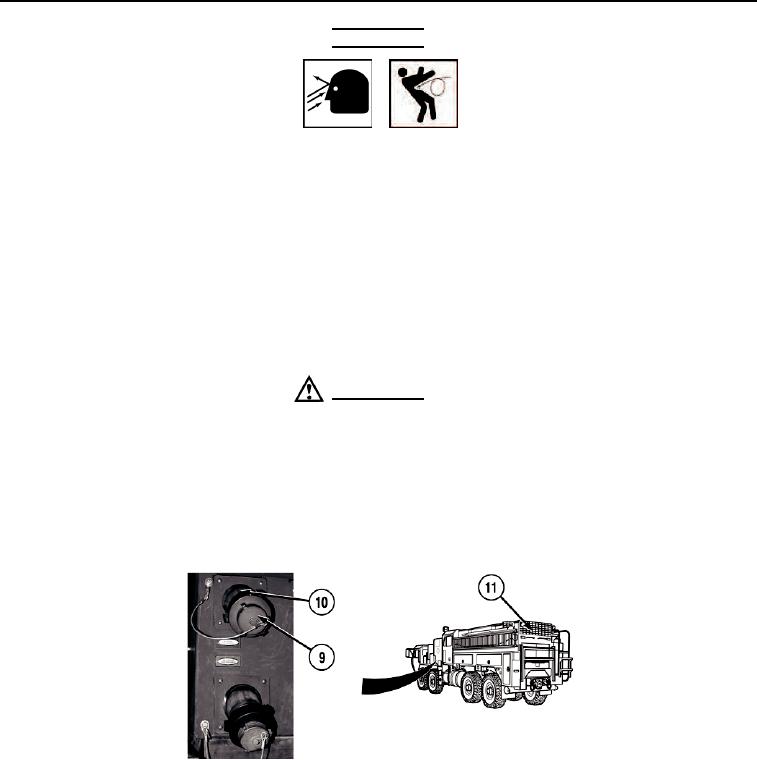
DRAFT
TM 5-4210-249-13&P-1
0027
- - - - - - - - - - - - - - - - - - - - - - - - - - - - - - - - - - - - - -
WARNING
ICON 5
Discharge caps should not be removed if water system is under pressure.
Discharge caps can act as projectiles if released under pressure causing injury or
death to personnel.
If any discharge hose is used, make sure hose is removed from hose bed, nozzle is
securely attached, and nozzle is turned off before opening any discharge valves.
Failure to comply may result in injury to personnel.
Open and close all valves slowly during any procedure. Sudden changes in
pressure may cause equipment to react faster than personnel can be alerted.
Ensure surrounding personnel are aware of changes being made to settings on
equipment. Failure to comply may result in injury or death to personnel and
damage to equipment.
CAUTION
Cavitation can occur when pumping and air enters water. If engine speed increases
without an increase in pressure, pump may be cavitating. Even though pump may
be primed, air leaks can cause rough operation and an increase in engine speed
without an increase in pressure or flow. If an air leak is suspected, discontinue
pumping and isolate problem. Cavitation can also occur with large nozzle tips.
Solve this problem by reducing flow. Failure to comply may result in damage to
water pump.
- - - - - - - - - - - - - - - - - - - - - - - - - - - - - - - - - - - - - -
TFFT02177
12. Remove cap (9) from NO.1 DRIVER SIDE DISCHARGE (10).
13. Connect discharge hose (11) to NO. 1 DRIVER SIDE DISCHARGE (10).
0027-4

